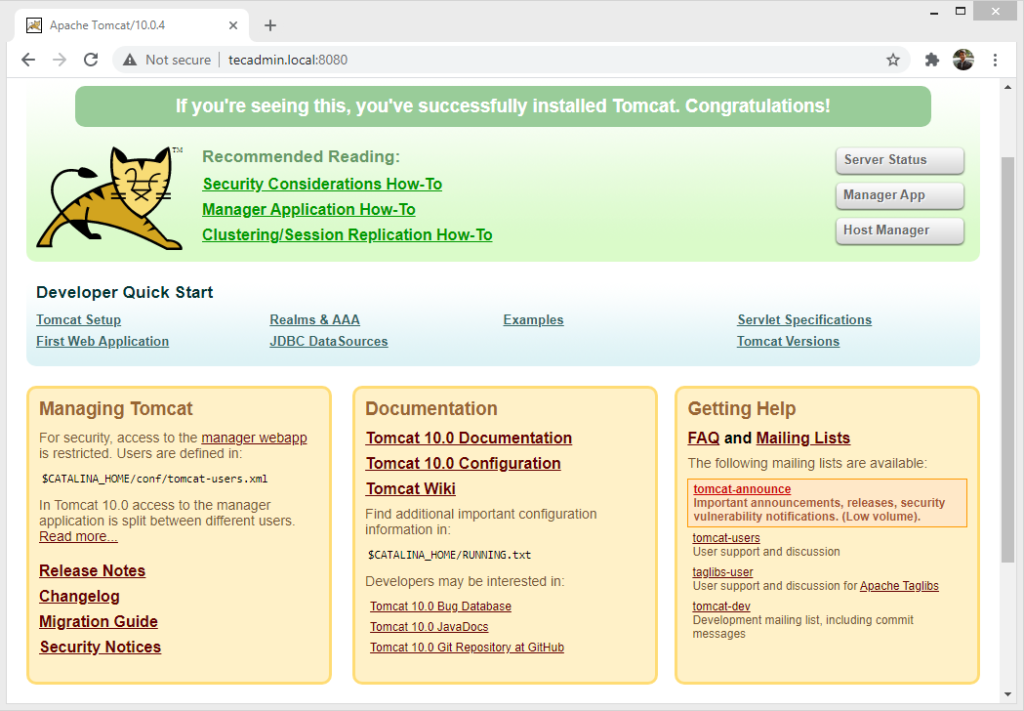Understanding the concept of prime numbers and how to identify them is an essential aspect of mathematics. A prime number is a number that has only two distinct natural number divisors: 1 and itself. In other words, if you pick a prime number and attempt to divide it by any other number except 1 and the number itself, it will always result in a fraction. The first few prime numbers are 2, 3, 5, 7, 11, 13, etc. In the realm of programming, creating a program to check for prime numbers is a common task and an excellent way to…
Author: Rahul
A prime number is a natural number greater than 1 that is not a product of two smaller natural numbers. In simpler terms, a prime number is a number that has only two distinct natural number divisors: 1 and itself. This property makes prime numbers an interesting and widely studied topic in the world of mathematics and computer science. In this article, we will learn how to write a Java program that checks whether a given number is a prime number. Java Program to Check Prime Number The key idea to check whether a number is prime or not is…
A prime number is a natural number greater than 1 that has no positive divisors other than 1 and itself. In this article, we will explore how to write a shell script to check if a given number is prime or not. This script will be written in Bash, which is a popular shell language commonly used on Unix-like operating systems like Linux. A shell script is a program written in a shell programming language that executes commands read from input devices such as keyboards or from files. Shell scripting is a powerful tool for automating tasks, and in this…
Apache Tomcat is an open-source web application server designed for hosting Java-based applications. It is developed by the Apache foundation and still provides upgrades and features. It’s easy to install and use, and provides a powerful platform for web applications. In this tutorial, we’ll walk you through the steps of installing Tomcat 10 on Ubuntu 22.04. We’ll also discuss some important concepts related to the installation, such as setting up the environment, downloading and installing the necessary packages, and configuring the Tomcat instance. Prerequisites Before you start, you need: A fresh Ubuntu 22.04 installation Access to a user account with…
Kali Linux is a Debian-based Linux distribution developed for advanced penetration testing and security auditing. It contains a multitude of tools that can help users conduct everything from simple vulnerability testing to complex network intrusion examinations. Here is your ultimate guide to getting started with Kali Linux, from downloading the software to installing it on your device. Step 1: Requirements Before you can download Kali Linux, you need to make sure your system can run it. The minimum requirements are: A minimum of 20GB hard disk space for installation A minimum of 2GB RAM (4GB recommended for smooth functioning) A…
C, as a programming language, possesses a wide range of built-in functions. One such critical function is printf(), which is extensively used for output formatting. The printf() function is a part of the standard library and comes under the category of Input/Output functions. This function serves as the principal means to produce output from a C program. This article will delve into an exhaustive understanding of the printf() function in C programming. Basics of printf() In its simplest form, the printf() function is used to print the “Hello, World!” text on the console.
1 2 3 4 5 6 | #include <stdio.h> int main() { printf("Hello, World!\n"); return 0; } |
printf() function’s general syntax is:
1 | int printf(const char *format, ...); |
…
Lexical order, also known as lexicographic order, dictionary order, or alphabetical order, is one of the most fundamental ways of organizing and comparing strings in almost every aspect of computer science, linguistics, and information processing. It’s a system that most of us learned early in our education, and yet, its universal significance is frequently overlooked. This article serves as a comprehensive guide to understanding the concept of lexical order and its widespread applications. What is Lexical Order? Lexical order is a method used to arrange words based on the alphabetical order of their component letters. This ordering system has been…
When managing a PostgreSQL database, the process of creating and managing users is a fundamental task. This article will cover everything from creating a basic user to creating a superuser, as well as setting passwords, permissions, and more. Understanding PostgreSQL Roles In PostgreSQL, there isn’t a direct concept of users, instead, it uses the term ‘roles’. Any role can act as a user, a group, or both depending on how you set them up. A role that can login is equivalent to a user. Hence, when we talk about creating users, we are actually creating roles with the login privilege.…
The Fibonacci series, named after the Italian mathematician Leonardo Fibonacci, is an infinite sequence of numbers that has captivated mathematicians, biologists, artists, and philosophers for centuries. It appears mysteriously in a wide variety of scientific and natural contexts and has become an emblem of the unexpected mathematical beauty found in nature. Understanding the Fibonacci Series At its simplest, the Fibonacci sequence is a series of numbers where every number after the first two is the sum of the two preceding ones. Often starting at 0 and 1, the series goes: 0, 1, 1, 2, 3, 5, 8, 13, 21, 34,…
Armstrong numbers, also known as narcissistic numbers, are a fascinating topic in number theory, a branch of mathematics that examines the properties and relationships of numbers. Named after Michael F. Armstrong, Armstrong numbers exhibit an intriguing characteristic that sets them apart from other numbers. Definition An Armstrong number is a number that is equal to the sum of its digits each raised to the power of the number of digits. In other words, if you take each digit in the number, raise it to the power of the total count of digits in the number, and then sum them all…


